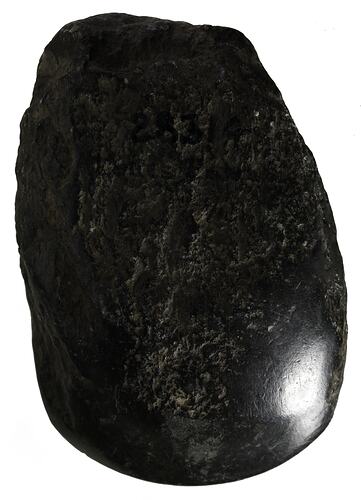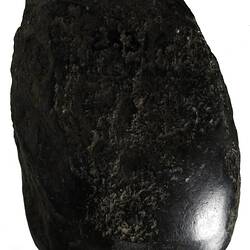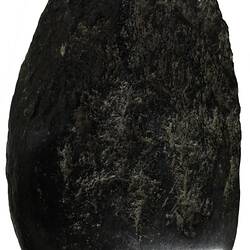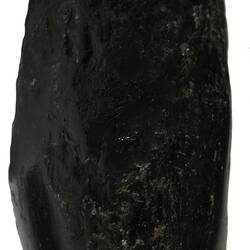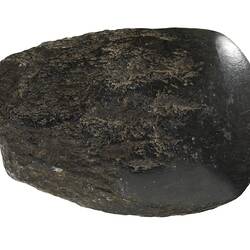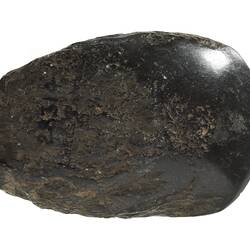Summary
Stone was the heaviest and most durable material available to First Peoples across Australia. The use of metal was unknown until contact with Indonesian fisherman in the Northern Territory in the 17th century, and in later times with Europeans.
Throughout Australia, Aboriginal people used axes to cut down small trees, chop wood, remove tree bark for canoes and shelters, butcher large animals and undertake many other tasks. The axe was used to make notches for footholds in tree trunks and to enlarge holes in trees to access small animals. They were also used as weapons, ceremonial objects and valuable trade items.
Many axe heads come from a large greenstone quarry at Wil-im-ee Moor-ing (Mount William) in western Victoria, on the traditional lands of the Wurundjeri peoples. Greenstone from Wil-im-ee Moor-ing was traded up to 800 kilometres away, but not into the eastern half of Victoria. The Gunai/Kurnai people in the east had their own quarries and system of trade determined by ancient trade boundaries that have existed for many thousands of years.
Aboriginal craftsmen made 'axe blanks' by striking large flakes of stone from rocky outcrops. First, these were roughly shaped and they were often finished away from the quarry. Grinding was usually done at axe-grinding sites, on sandstone outcrops, which were often located near a river.
Physical Description
Ground-edged hatchet/axe head; unhafted. Finely polished edge.
Significance
The Gunai/Kurnai have a strong historical and ongoing connection to the Gippsland region with many of their significant sites are associated with water resources. It is a testament to the Gunai/Kurnai people's relationship, knowledge of and respect for their Country as Traditional Owners that the Gippsland Basin bioregion is home to some of Australia's most pristine waterways. On 22 October 2010 the Federal Court recognised that the Gunai/Kurnai hold native title over much of Gippsland. On the same day, the State of Victoria entered into an agreement with the Gunai/Kurnai (Recognition and Settlement Agreement) under the Traditional Owner Settlement Act 2010.
The Gunai/Kurnai Creation stories tell us that the first Gunai/Kurnai, Boorun, the pelican, travelled down from the mountains in the northwest of Victoria. At Sale Boorun crossed the river and continued west to Port Albert. As Boorun walked he heard a constant tapping noise which he could not identify. Upon reaching the deep water of the inlets, Boorun put down his canoe and was surprised to find a woman in it. She was Tuk, the musk duck. Tuk became Boorun's wife and together Tuk and Boorun are the mother and father of the five Gunai/Kurnai clans.
More Information
-
Object/Medium
Stone artefact
-
Maker
-
Locality
-
Date Collected
-
Fully Extended
115 mm (Length), 75 mm (Width), 40 mm (Height)
-
Classification
-
Date Made
-
Maker
-
Clan/Language Group
-
Place Made
-
Indigenous Region
-
Keywords
-
Type of item
-
Discipline
-
Category
-
Collecting Areas
